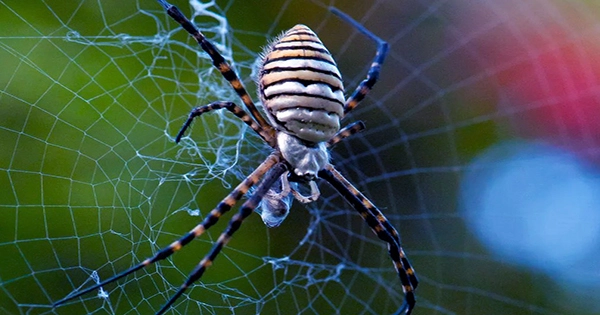According to new research, spiders may have ears all across their webs, which are being reimagined as “external eardrums.” The authors show how the orb-weaving spider Larinioides sclopetarius may outsource sound perception to a structure external to its body. The wispy nature of orb weavers’ webs not only works as an acoustic “antenna” for detecting sound but is also one of nature’s most effective “eardrums,” according to the preprint research, which is not yet peer-reviewed but available to read on BioRxiv.
The tympanic eardrum originated in the evolution of terrestrial organisms as a handy piece of equipment for hearing faint, airborne noises. It divides the outer from the inner ear in most humans, and if it is injured, it can have a significant influence on hearing. Long spindly structures formed in the bodies of invertebrates lacking this equipment, allowing them to hear airborne sounds. Whatever the solution, the animals’ sound organs were all a part of their bodies.

The webs of L. sclopetarius produced spontaneously by lab animals inside wooden frames were the subject of this new study. The spiders were then videotaped to examine if and how they responded to varied distances and directions of airborne acoustic tones.
The spiders’ body posture changed even in response to sound released from 3 meters (10 feet) away from the web, according to their recordings. In response to the sounds, they would squat, flatten their bodies, exhibit their forelegs, and quickly shift direction. The spiders’ potential predators and food, such as birds, frogs, and crickets, are noisy (> 80 dB), according to the researchers, yet their lab trials revealed that the spiders have a hearing threshold of less than 68 dB. They expect that these spiders will be able to identify predators and prey from a distance of more than 10 meters (32 feet).
The preprint publication has yet to be peer-reviewed, but if the findings are confirmed, it might mean that spiders have overcome body size limits to develop an external eardrum with a surface area up to 10,000 times that of the spider itself. Spider hearing has been reported before, with ogre-faced spiders considered to “hear” with their hairy legs.
Aside from their massive size, the advantages of hearing with sustainable and repairable spider silk imply that spiders may change their massive, acoustic antenna landing pads to suit their demands. For anyone who has ever dealt with the agony of a perforated eardrum, this is an admirable quality.
In their work, the researchers state that “biologists and material scientists are still uncovering novel features of spider silk that can be reused as a biomaterial and deployed for practical human applications.” “Spider auditory function “outsourcing” and “supersizing” gives unique qualities for researching extended and regenerative sensing and building novel acoustic flow detectors for precise fluid dynamic measurement and manipulation.”















